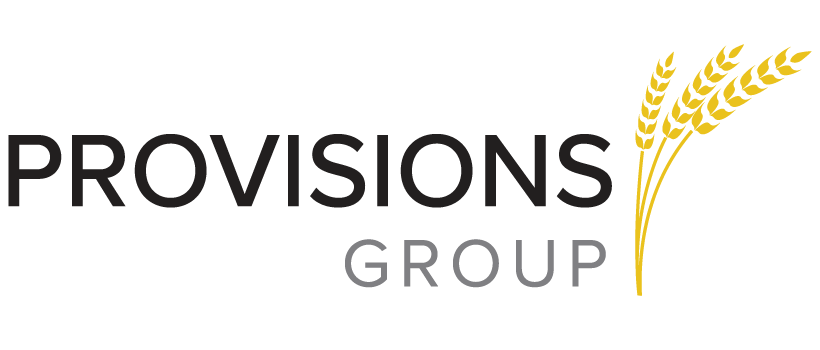End-to-end IT solutions for healthcare organizations.

A Complete Guide to Data Segmentation
Marketing experts estimate the average consumer sees between 4,000 and 10,000 ads per day. To stand out in the digital battleground, businesses today need to completely understand their customers and their needs, and how to target them effectively. Enter data segmentation. Data segmentation is crucial to meeting customers' needs by offering a personalized experience.
In this complete guide to data segmentation, we'll discuss what data segmentation is, the types of data segmentation, and ways you can use data segmentation to improve your business.
What Is Data Segmentation?
Data segmentation is the process of dividing a large dataset into smaller, more manageable data points. It can be used to analyze customer behavior and demographics, determine consumer preferences, and identify target markets. Using data segmentation, businesses are better equipped to make decisions that will help them grow and succeed in their industry.
Data Segmentation vs Targeting
The data segmentation process groups data points based on certain characteristics while targeting is a process that uses data to create tailor-made marketing strategies to market products and services to specific groups of customers. Data segmentation can be used to create customer profiles. Targeting uses those customer profiles to deliver highly personalized messages that resonate with the target audience.
Benefits of Data Segmentation
Data segmentation is an invaluable tool for businesses, as it allows them to gain insight into their customer base and create more effective marketing strategies. When businesses fully understand their customer's behaviors and preferences, they can better serve their customers' needs, leading to:
- More qualified lead generation. Businesses can target the right people with the right message to increase the chances of creating qualified leads.
- Increased sales and ROI. Data segmentation allows businesses to spend marketing budgets more efficiently by targeting their ads to specific customers who are most likely to convert. Similarly, data segmentation allows businesses to implement personalized messaging. A recent study by Epsilon research found that 80% of consumers are more likely to make a purchase when brands offer personalized experiences.
- Better customer service. Businesses can better serve their customers with timely and accurate responses to inquiries when they truly understand customer needs and expectations. This leads to improved customer relationships, loyalty, and ultimately, positive word-of-mouth marketing for your brand.
- Improved data security. Data segmentation can help protect companies from data breaches and other cyber threats. Many data segmentation tools have built-in features that limit access to important customer information, allow businesses to create secure profiles, and ensure only authorized personnel have access to critical data.
The Use of AI in Data Segmentation
The use of artificial intelligence (AI) in data segmentation is becoming increasingly popular. AI-powered systems utilize automation to quickly analyze large datasets and highlight the most important trends, enabling businesses to make better decisions faster with their budgets and resources. AI also allows marketers to quickly segment experiences for customers based on their behaviors and preferences. For example, AI can be used to send automated messages and serve personalized recommendations. AI-powered data segmentation also reduces the risk of data management errors such as human bias.
Types of Data Segmentation
There are various types of data segmentation, each with its own unique benefits. The most common types include:
Demographic
Demographic segmentation focuses on characteristics like age, gender, income level, and education. For example, a clothing brand may segment its target customers based on age and target those groups with ads highlighting products that may appeal more to specific age groups.
This highly common type of segmentation allows companies to customize their messaging and offers to a specific audience.
Psychographic
Psychographic segmentation focuses on customer lifestyle, values, interests, and behaviors.
An example of psychographic segmentation could be targeting active sports enthusiasts with ads for running shoes or fitness equipment. This type of segmentation will help companies capture their target audience's attention by focusing in on their interests and lifestyle.
Geographic
Geographic segmentation looks at...you guessed it...customer location. Companies can use geographic segmentation to determine the best marketing approach for a specific region or city. For example, a business with locations in different states may need to adapt its messaging based on local "isms" such as language, local culture, and local traditions.
Behavioral
Behavioral segmentation is based on customers’ past behaviors, such as purchase histories and website visits. These engagement metrics allow businesses to anticipate customer needs and send personalized messages or offers at the right time. For example, a restaurant may use behavioral segmentation to target customers who haven't visited in a while with discounts to bring them back.
Challenges of Data Segmentation
Implementing data segmentation tools and strategies can be a difficult task to undertake. Companies must have the right tools, processes, and personnel in place to ensure that their data segmentation efforts are effective. Additionally, companies must also consider legal and compliance implications when handling customer data. Data privacy regulations such as GDPR require businesses to protect personal data and ensure that customer information is being handled responsibly. Companies must also be aware of potential ethical issues, such as targeting vulnerable populations or stigmatizing certain groups with inappropriate messaging. It's important to consult with experts to understand the nuances of your industry and your business area.
In addition, data quantity and data quality issues can also arise when implementing data segmentation strategies. Data must be accurate and up to date in order for businesses to make informed decisions with their customer segmentation efforts. Poor quality data can lead to inaccurate insights and unsuccessful campaigns. It's important that businesses invest in regular maintenance and data hygiene processes that enable businesses to keep their data up-to-date and relevant.
How to Improve Your Data Segmentation Strategy
To get the most out of your data segmentation efforts, it's important to have a well-defined strategy in place.
Step 1: Perform an Audit
A good first step is to perform an audit. Take a look at all of the customer data you have available and determine what insights you can make. Identify any gaps in your data and determine what new data you need to collect in order to further segment your customer base.
Step 2: Establish Goals
Once you have identified all of the available data, establish clear goals for each segmentation effort. What do you hope to accomplish? Are you looking to optimize conversion rates or increase lifetime value? Understanding the end goal of your data segmentation efforts will help you make more informed decisions and track progress along the way.
Step 3: Utilize Automation
Automating your data segmentation efforts can help you save time and resources. By utilizing automated tools, such as customer relationship management (CRM) software or marketing automation platforms, businesses can quickly and easily segment their customers and send personalized messages at scale.
Step 4: Monitor & Measure Results
Finally, it's important to track the success of your data segmentation efforts over time. Track key metrics such as conversion rates, click-through rates, and customer engagement in order to determine what is working and what isn't.
Implementing the right data segmentation strategy helps businesses go beyond the limits of legacy business intelligence technology and processes. With Provisions Group at your side, you can discover, manage, and deliver transformative insights that drive results. Our team of data-wise experts develops and maintains scalable, high-quality data architecture and foundations for optimizing analytics as well as modern approaches to data integration. Get started with Provisions Group today.

